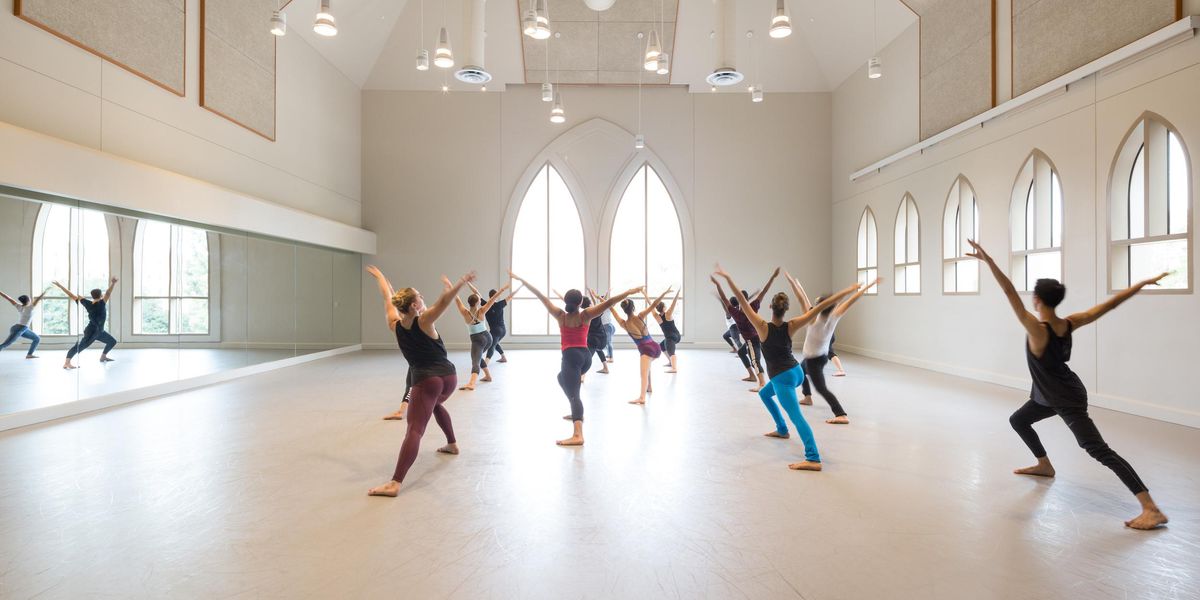Why I Choreograph: Jill Sigman
Photo by Elisabeth F. Lund, Courtesy Sigman.
One late-summer day last September, you could find Jill Sigman’s dancers pouring their attention into a series of physical tasks—not in the studio, but on an urban farm in Red Hook, Brooklyn, plucking weeds from the soil under a blazing sun. The volunteer effort served as research for
last days/first field, which will join Sigman’s body of brave, socially conscious work when it is shown this spring, tentatively scheduled for May 7–9 at the Invisible Dog Art Center in Brooklyn. Since founding her company, jill sigman/thinkdance, in 1998—the same year she received her Ph.D. in philosophy from Princeton University—Sigman has been confronting messy issues head-on, in ways both poignant and unsettling. From her early classical ballet training at the Joffrey Ballet School and Ballet Center of Brooklyn, she has flung open the doors of her artistic practice to bridge the gap between making dance and making change in the world.
I have come to see performance as an alchemical process. My work is multilayered, existing at the intersection of dance, theater, and visual installation. I aim to engineer a collective moment of presence in a disconnected and “over-mediatized” world. As we face issues like extreme weather, economic instability, and political polarization, I choreograph because I think the most powerful antidote to our disconnection is the development of a public with an active mind and an active heart. Over the past 20 years, I have quietly but insistently nudged people to think and feel together.
For me, choreographing is about orchestrating experience—for dancers, audience members, students, volunteers, or others who are part of the web of my work. For the past three years I have been building huts out of discarded materials (trash). These huts are containers for performances as well as community dialogues, serving tea, cooking with discarded food, and raising issues around waste, sustainability, and real estate. I choreograph on different levels: the found materials that go into the hut, the movement I do in and around it, the experience of people who have tea. I also choreograph the movement of those materials back into people’s possession through “free markets,” barter, and underground economies. All this is part of my work.
I am currently choreographing a new dance for eight performers called last days/first field. We are an impromptu learning community and I craft our experiences together. We engage in a movement practice; we volunteer on urban farms; we discuss social issues. In addition to dancing, we will plant a small field of seedlings in a theater space as part of our performance.
I have been moved by the small, mindful steps taken by people in permaculture (a way of designing living systems), and sustainable agriculture who are trying to make change. With this performative planting I want to share a durational experience of care, focus, and presence with an audience who watches this process unfold in “real time.” I want to create a communal ritual/lounge/occupy encampment that goes beyond our movement and its aesthetic form. This is what and why I choreograph.
Last spring I was honored to be an artist in residence at the Wesleyan University Center for the Arts, in collaboration with the Center for Creative Research. As part of my research, I co-designed a course on ritual and healing with a faculty anthropologist. During this process, I recognized many features of ritual in what I do in making performance—especially the desire to connect us to a place and to each other, and to bring issues to the surface for a community, digest them through movement, and transform them in some small way.
My roots in dance—ballet, modern, flamenco—and my training in analytic philosophy have shaped who I am as a choreographer and give rise to my desire to work in the fold between mind and body. Before that, I grew up in a basement in Brooklyn, and I have used movement and found objects as the glue for my alchemical processes ever since.




